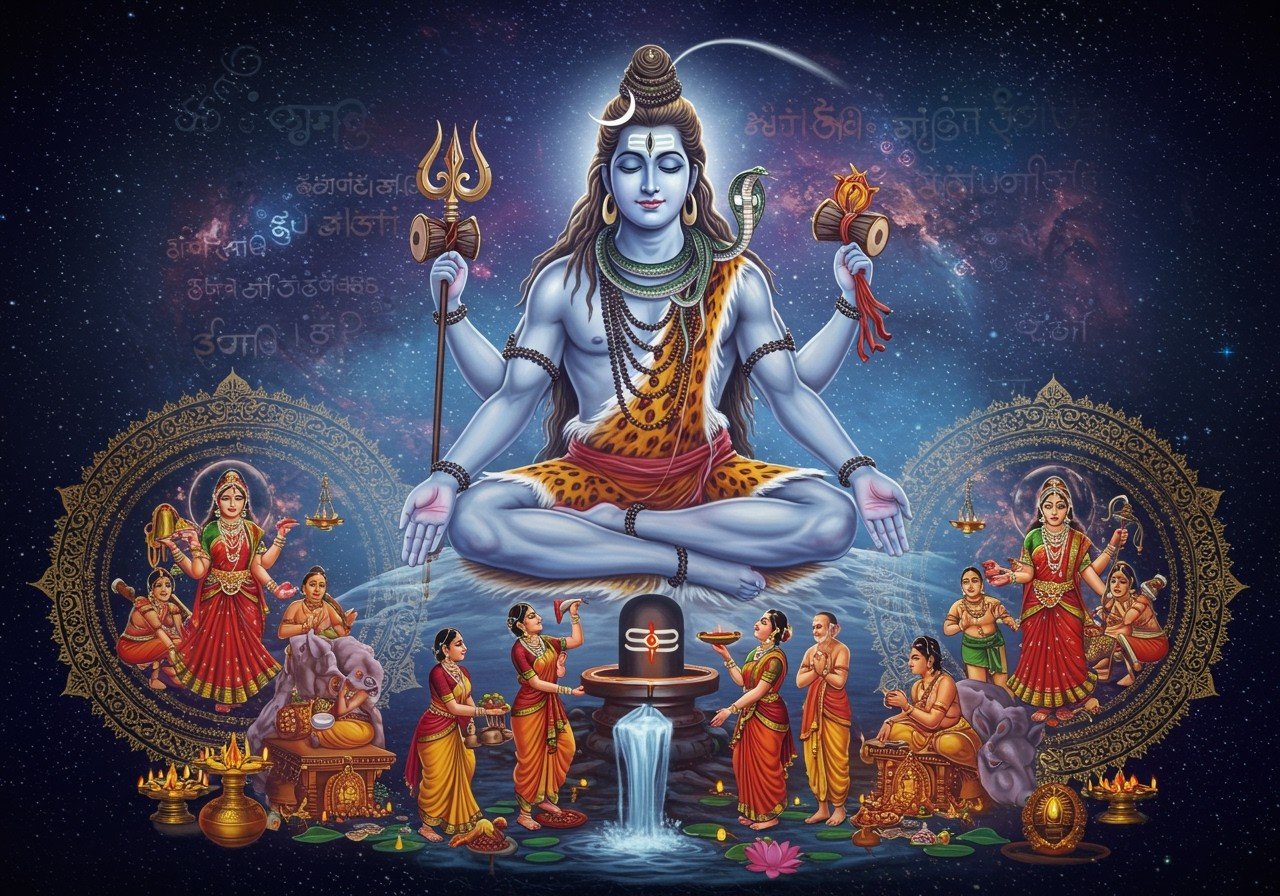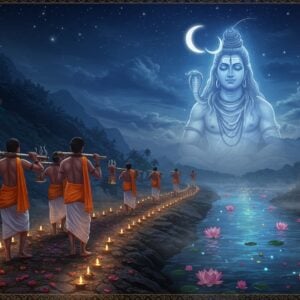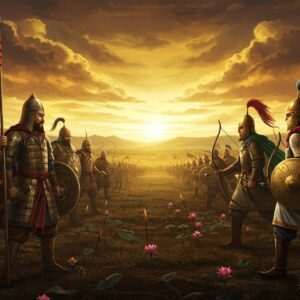The Profound Influence of Lord Shiva on Indian Culture

In the tapestry of Indian culture, Lord Shiva, revered as Mahadeva, holds a profoundly significant place. His influence extends far beyond the walls of temples, permeating art, literature, philosophy, and the very fabric of daily life. For those seeking an authentic cultural experience, understanding Shiva’s role is essential. Let’s delve into the multifaceted presence of Shiva in India.
Religious Significance of Shiva
Shaivism, a major branch of Hinduism, reveres Shiva as the Supreme Being. Shaivas believe he is the source of creation, preservation, destruction, revelation, and concealment – the entire cosmic cycle. As part of the Trimurti, the Hindu trinity alongside Brahma and Vishnu, Shiva represents destruction, but a destruction that paves the way for renewal and positive transformation. He is also one of the five equivalent deities in Panchayatana puja, highlighting his widespread reverence across various Hindu traditions. Indeed, Shiva’s devotion spans across geographical boundaries, with deep roots in India, Nepal, Bangladesh, Sri Lanka, and Indonesia.
-
Curious about exploring Hinduism’s core beliefs and practices? Delve deeper with our insightful blog post: Exploring Hinduism: Core Beliefs and Practices.
The Many Roles and Symbols of Shiva
Lord Shiva embodies the duality of creation and destruction, representing the constant flux and transformation of the universe. He is known as “The Auspicious One,” a name that speaks to his benevolent nature despite his association with destruction. Revered as the Adiyogi, or first yogi, Shiva is the patron deity of yoga, meditation, and the arts, embodying spiritual discipline and enlightenment. Beyond his ascetic form, Shiva is also depicted as a householder, a family man with his wife Parvati and sons Ganesha and Kartikeya, showing the balance he represents in all aspects of life. His iconography is rich with symbolism, from the trident (trishul) representing the three fundamental qualities of nature to the serpent symbolizing kundalini energy, the damaru (drum) representing creation, the third eye of wisdom, and the Shiva Linga, a symbol of his divine energy and the creative force of the universe. Each symbol adds another layer to the complex and profound nature of Shiva.
Shiva’s Influence in Arts and Culture
Shiva’s influence permeates Indian classical dance and music. The Tandava, his cosmic dance of creation and destruction, is a powerful motif that has inspired countless dancers and choreographers, particularly in traditions like Bharatanatyam and Kathak. From ancient scriptures like the Shiva Purana to modern literature, Shiva’s stories and symbolism continue to inspire authors and artists, reflecting his timeless appeal. Ancient sculptures at sites like Elephanta and Ellora stand as testaments to his enduring presence in Indian art. Even today, modern artists draw upon Shiva’s symbolism, exploring themes of spirituality, existentialism, and human consciousness.
-
Did you know the Ramayana also deeply impacted Indian culture? Explore its enduring influence in Ramayana’s Enduring Influence on Indian Culture.
-
Poojn.in offers a wide selection of exquisite Radha Krishna bigrahas to bring divine grace into your home.
Practices and Festivals Dedicated to Shiva
Yoga and meditation, integral practices for spiritual growth, find their roots in Shiva’s teachings. Maha Shivaratri, a major Hindu festival, is a time of deep devotion to Shiva, marked by fasting, prayers, and all-night vigils. Pilgrimages to sacred Shiva temples across India are a significant part of spiritual practice, connecting devotees with the divine energy of Mahadeva. These journeys often involve visiting jyotirlingas, representing the radiant form of Shiva, scattered across the Indian subcontinent.
Key Concepts in Shiva Worship
The Shiva Linga is a central symbol in Shiva worship, representing his divine energy and the creative power of the universe. Chanting “Om Namah Shivaya,” a powerful mantra, is a common practice among devotees, invoking Shiva’s blessings and expressing reverence. The story of Shiva consuming poison to save the world, earning him the name Nilkantha (“blue-throated”), reflects his compassion and selflessness.
-
Bring the divine presence of Shiva into your home with a beautifully crafted Shiva Lingam from Poojn.in.
-
Enhance your spiritual practice with authentic Shiva Murtis and other essential puja items from Poojn.in.
Shiva’s Enduring Legacy
Lord Shiva’s presence in Indian culture is deeply woven and continues to inspire. He is more than a deity; he is a symbol of transformation, balance, and the cyclical nature of life. His teachings and stories resonate deeply within the hearts of millions, offering guidance and solace. Through festivals, rituals, art, and literature, Shiva’s legacy endures, enriching lives and connecting people to their spiritual heritage. He remains a source of strength and inspiration for those seeking a deeper understanding of themselves and the universe.


